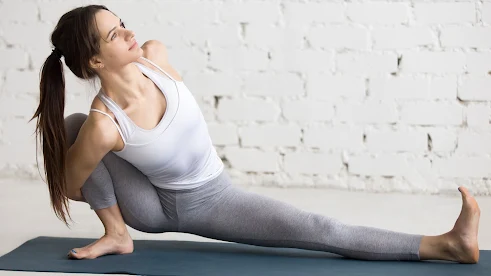Yoga With Your Pals Makes
According to a new study, guided yoga in a group helps reduce fainting, and now is the time to sign up for that yoga class with your best buddy!
According to new research, guided yoga is more efficient than traditional treatments in preventing fainting in recurrent fainters. In terms of quality of life, guided yoga therapy is also superior to normal treatment. EP Europace, a publication of the European Society of Cardiology, published the study's findings (ESC). "Continual fainting causes mental tension, worry, melancholy, and a continual fear of the next episode," says the study.Professor Jayaprakash Shenthar of the Sri Jayadeva Institute of Cardiovascular Sciences and Research in Bengaluru, India, was the study's lead author. "Unpredictability has a detrimental impact on quality of life. Furthermore, in several nations, patients are not permitted to drive."
A temporary loss of consciousness known as "fainting" or "vasovagal syncope" is caused by a reduction in blood supply to the brain. Prolonged standing, fear, discomfort, seeing blood, and hot, humid conditions can all induce it. Approximately half of the general population will have at least one syncopal event over their lifetime. Keeping hydrated, avoiding hot, crowded surroundings, tensing muscles, and lying down are all recommendations for preventing vasovagal syncope. "Unfortunately, most therapies only provide minor advantages, which frustrates patients," Professor Shenthar stated.
In terms of quality of life, guided yoga therapy is also superior than normal treatment; Image Credit: Pexels
This was the first randomised trial to look at guided yoga as a treatment for vasovagal syncope patients. A total of 100 patients were enrolled in the trial, all of whom had experienced at least three episodes of vasovagal syncope in the previous year. At the time of enrollment, none of the patients were receiving treatment for syncope and none of them were practising yoga. Participants were assigned to either the yoga or conventional treatment groups at random. When warning signals of syncope appeared, the standard treatment group was recommended to drink 6 to 9 grammes of salt and more than 3 litres of water every day, as well as conduct physical counterpressure techniques such as crossing legs and tensing thigh and buttock muscles.
 | |
| yoga master johnson |
There was no explicit instruction offered to the yoga group about salt, fluid, or physical counterpressure actions. Instead, they went to 5 to 7 sessions to learn how to do a 60-minute yoga module from a qualified yoga instructor. Pranayama (breathing), asanas (postures), and dhyana (meditation) were included in the yoga programme (meditation). For the next 12 months, participants were instructed to practise yoga for 60 minutes at least 5 days each week. On a scale of 1 to 8, participants were asked to count the number of times they fainted amid fear or worry.
Follow-up. The syncope functional status questionnaire was used to assess quality of life at baseline, 3, 6, and 12 months. It asks how syncope affects daily activities like driving, shopping, exercise, and relationships with family and friends, as well as how respondents rate their fear/worry on a scale of 1 to 8.
The average age of the participants was 33, and more than half of them were female. Prior to the study, the average length of syncopal episodes was 17 months, with an average of 6.4 blackouts per patient. At 3, 6, and 12 months, the yoga group had fewer blackouts and higher quality of life scores than the traditional treatment group. During the 12-month follow-up period, the standard treatment group had 3.8 fainting episodes, whereas the yoga group had 1.1. ", remarked Professor Shenthar.
The advantages of guided yoga became apparent three months after the start of treatment and lasted for six and twelve months. According to preliminary research, the breathing and meditation portions of yoga have a good effect on the autonomic system3, while the 'asanas' increase vascular tone, both of which could reduce blood pooling in the lower body."
He came to this conclusion: "Yoga may be a viable therapeutic alternative for patients with vasovagal syncope, according to our modest, well-controlled single-center trial. To corroborate the findings, larger multicenter trials are required."




